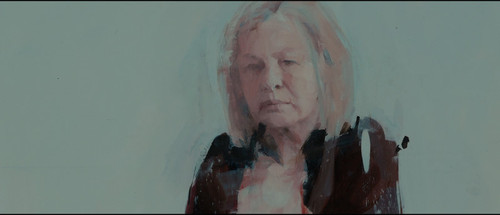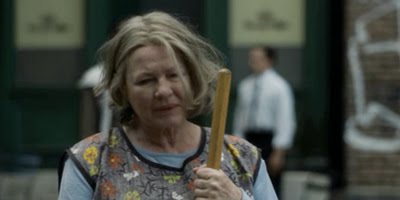I’ll warn you upfront that this is going to make extensive reference to the movie Synecdoche, New York. It’s not so much a spoiler warning, because this isn’t the type of movie that can be spoiled. It’s more to warn you that you will have no idea what I’m talking about if you haven’t seen it.
This is one of the best movies ever made, so go watch it if you haven’t. I’ve tried to watch it at least once a year since it came out.
Synecdoche, New York Explained
The movie follows Caden Cotard, a middle-aged director of plays who wins a MacArthur grant. He decides to put on a gigantic semi-improvisational play about death.
This ends up getting super meta, because he hires actors to play people in his life, including himself. Then there have to be actors to play those actors, etc.
Early on, Caden’s wife, Adele, leaves him and takes his daughter along. Ellen is introduced as Adele’s cleaning lady late in the movie.
Caden is also a hypochondriac. He believes he has a million things wrong with him throughout the movie and that he is about ready to die at any moment. This amount of background should suffice. The key is to know the names Caden, Adele, and Ellen.
The Ellen Puzzle
This is going to be a complicated argument that involves seemingly unrelated concepts. So I’ll start with the conclusion so you know where I’m headed.
Conclusion: Ellen is Caden’s true self.
Concept 1: Caden only experiences his true self while cleaning.
Because of all his anxieties about art, being remembered, dying from a random disease or freak accident, and so on, he can’t ever clear his head enough to find himself.
One way the film shows this is through the TV. Caden often appears on the TV screen in cartoons or commercials, and these give voice to the anxieties in his head at the time.
There are several scenes where Caden obsessively cleans things. As soon as this happens, the TV fogs over, and the anxious thoughts disappear. He becomes so consumed in the mindless activity that he can exist as his true self, sort of like meditation.
Concept 2: People see Ellen inside Caden when he is his true self.
There are quite a few moments where Caden gets called Ellen on accident early on in the movie. I interpret this as a Freudian slip; everyone knows this person is beneath the layers of anxiety, but they don’t consciously know. It merely slips out on occasion.
The more compelling case comes from later in the movie. Caden goes to Adele’s apartment, and the next-door neighbor asks if he is Ellen. He says he is and then goes into the apartment and cleans for the whole night.
The deepest argument for this is that when Adele paints Caden’s portrait, the image is of a woman, Millicent, whose role in this argument is quite important.
Caden’s portrait:

Millicent playing the role of Ellen:

Since the whole movie is constantly about how art shows us things about ourselves we couldn’t see, we should interpret this as the painting showing us the person beneath Caden’s surface.
Concept 3: Millicent is the physical stand-in for Ellen.
Millicent gets hired to play Ellen in Caden’s play. This is already telling, because her lines are, of course, the ones that Caden said already. This is because Caden claimed to be Adele’s cleaning lady, Ellen, in order to be in her apartment.
Later, Millicent recalls a story from Ellen’s childhood. She cries at the end of it. I interpret this to mean the story is from her own childhood. She even cries out about failing to fulfill her promise to her mother, which would make no sense if the mother in the story weren’t her own:
Synecdoche, New York Analysis
Concept 4: Caden becomes his true self at the end of the movie, and the false, anxious exterior becomes the hidden self.
This is shown metaphorically in the movie by having Millicent stop playing the role of Ellen and start playing the role of Caden. The voice inside Caden’s head literally becomes the voice of Millicent/Ellen through the use of an earpiece.
But if this doesn’t convince you, the last piece of evidence is the final scene.
The woman who played Ellen’s mother in the dream appears.
Wait, what?
This is extremely easy to miss and write off on a first viewing. The movie is over 2 hours long, and she only makes a 30-second appearance in the last 10 minutes in a dream sequence.
There is literally no other character with such a small role.
Why would a meticulously crafted movie end with this character other than to stand out as vitally important?
This woman holds Caden as if he is her baby. But we only know this character as Ellen’s mother.
This makes Caden her child: Ellen.
The voice in Caden’s head even blurts out “You are Ellen” on the walk to this encounter.
On the couch, he says, “I wanted to do that picnic with my daughter.”
That was what Ellen wanted to do. He has fully become her/his true self at this point. Without this interpretation, that line makes no sense. They converse as if they are mother and daughter here.
In a sense, this means the whole movie is the journey of Caden to find and become his true self.
If you liked this article, you might also like:
And my article on Upstream Color or Lynch’s Inland Empire.



